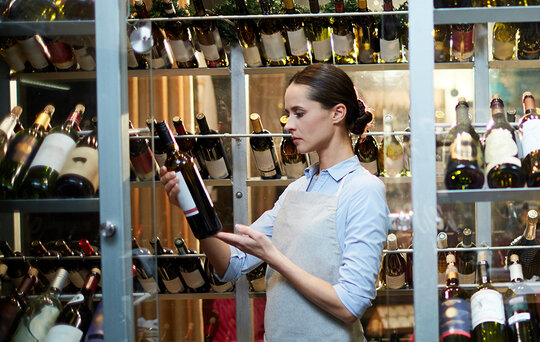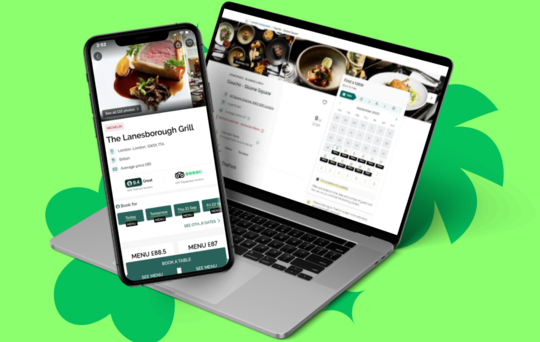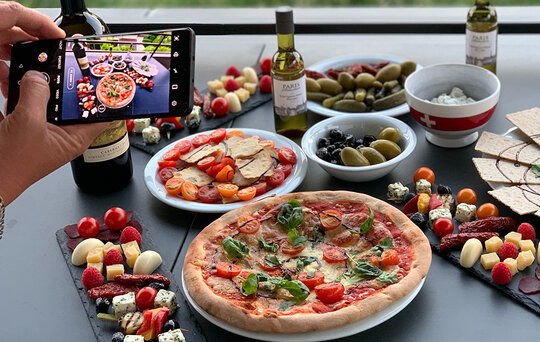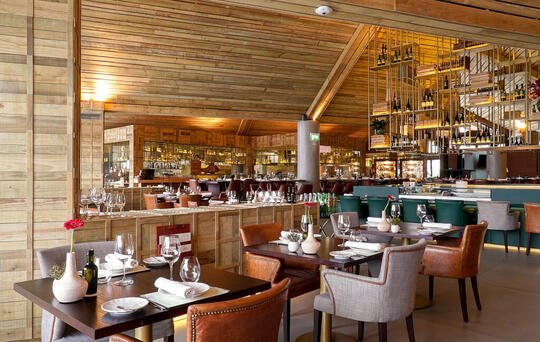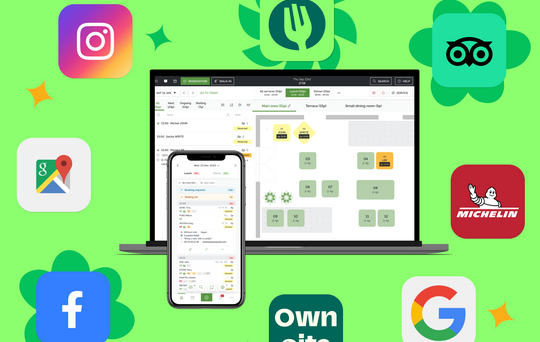What is Margin Rate and Average Margin in Hospitality?

- • What is a restaurant margin rate?
- • Try TheFork Manager today
- • Understanding your gross margin
- • More Key Performance Indicators to manage your restaurant’s finances
- • Average revenue per guest
- • Operating expenses ratio
- • Food cost ratio
- • Staff cost ratio
- • Optimise your revenue and margin on TheFork Manager
- • Empty tables and ever-increasing costs?
Successful restaurateurs know that winning in hospitality requires more than creative menus and top service.
No matter how good the food may be, a sustainable restaurant needs to be managed well if it is to continue delighting customers for decades to come. That means understanding and fine-tuning your financial margins to set you up for success.
At TheFork, we want to make managing the margins as seamless as possible so you can focus on maintaining exceptional service quality — read on to find out everything you need to know about optimising your restaurant for profitability.
What is a restaurant margin rate?
Your business’s total revenue isn’t the most important number to look at when assessing its financial health.
Before restaurants even sell a starter, they incur costs such as overheads, wholesale cost of ingredients or staff costs. You need to take all of these into account when looking at the overall margin.
A restaurant’s gross margin measures profitability by comparing pre-tax revenue to the cost of raw materials. For restaurants, these will primarily be ingredients. Here’s how you calculate it as a percentage:
(Pre-tax revenue – cost of raw materials) divided by Pre-tax revenue
So, imagine I make £10,000 on a menu item in pre-tax revenue, and but I pay costs of £3,000, that means I have an overall profit of £7,000.
To calculate my gross margin as a percentage of revenue, that would leave me with a profit margin of 70%.
The margin rate is a useful Key Performance Indicator (KPI) when it comes to managing a restaurant’s profitability. It represents the percentage of profit earned on every pound of sales. In other words, it indicates the portion of each sale that contributes to your restaurant’s profit after deducting costs.
Monitoring this rate helps you evaluate the effectiveness of your pricing, stock management, and cost control, allowing you to adjust strategies accordingly to improve your overall profitability.
That means the margin rate serves as a great guide to check in with regularly to help inform your business decisions.
Try TheFork Manager today
Understanding your gross margin
A healthy gross margin for solid products should fall between 70 and 75%, while for beverages, it should be around 85%. By monitoring and optimising this margin, you can better understand which parts of your menu contribute most to your restaurant's profitability and adjust your offerings to maximise your gains.
More Key Performance Indicators to manage your restaurant’s finances
While gross margin is a great tool for understanding your restaurant’s finances, it’s far from the only tool you can use to make informed decisions and optimise your menu effectively.
Each of the below indicators provides precise insight into different aspects of your business, helping you optimise your prices, negotiate with suppliers, control costs, and enhance profitability.
Average revenue per guest
Average revenue per guest is a crucial financial indicator for any restaurateur. It is calculated by dividing total revenue by the number of guests served and provides an average amount spent by each customer.
Monitoring average revenue per guest gives you a clear view of activity fluctuations, informing your marketing and operational strategies to help you increase average customer spending.
It can help you understand whether to prioritise upselling drinks and desserts, for example.
Operating expenses ratio
The operating expenses ratio is critical for evaluating how fixed and variable costs affect your restaurant's safety margin and profitability.
It looks at the relationship between revenue and necessary operating expenses (such as water, gas, electricity, maintenance, rent, insurance, etc.). These expenses should, on average, account for between 20 and 25% of the price of a meal. Effective management of these expenses can help inform your pricing strategy and significantly increase your restaurant's gross profit margin.
Food cost ratio
Food cost represents the difference between the cost of ingredients used to prepare a dish and the selling price of that dish.
The calculation is as follows: Food Cost Ratio = (Cost of Food/Revenue) x 100.
A healthy ratio for a restaurant should fall between 25 and 35%. This indicator helps optimise ingredient costs while maintaining competitive prices for your customers.
Staff cost ratio
The staff cost ratio is a vital tool for measuring the impact of labour costs on pre-tax revenue.
It is calculated as follows: Staff Cost Ratio = (Labour Cost/Revenue) x 100.
It indicates the proportion of labour costs in sales prices. Ideally, this ratio should fall between 30 and 45% to effectively balance your labour costs with generated revenues.
Optimise your revenue and margin on TheFork Manager
With TheFork Manager, you can directly view the number of online bookings and the additional revenue you’re generating, as well as tracking the margin, return on investment and even your restaurant’s online reputation and traffic.
As well as monitoring bookings, TheFork Manager offers many marketing levers and tools to help you increase your revenue. To help you nurture loyalty from your customer base, you can get involved with our Yums loyalty programme, which rewards diners for making a booking at your restaurant. You can even take loyalty to the next level by offering Double Yums, giving your restaurant an even greater chance to acquire and retain regular customers by capturing their attention.
Another invaluable opportunity to drive more bookings and generate more revenue is the annual TheFork Festival, an international dining event where TheFork users are encouraged to dine out at restaurants offering 50%. By offering this promotion during off-peak hours, you can increase your revenue by filling tables at times you usually wouldn’t.
By integrating TheFork Manager into your management strategy, you gain a comprehensive, real-time perspective on your business, which is an invaluable asset for sustainably increasing your restaurant's margin.
Efficient margin management is a central pillar of your restaurant's success. Understanding and implementing strategies to optimise average revenue per guest, gross margin, and various financial metrics are crucial. By adopting a proactive approach and leveraging available technologies, you can not only improve your restaurant's profitability but also enhance the experience you offer to your customers.
Read more about increasing your restaurant’s margin.
Empty tables and ever-increasing costs?
- What is a restaurant margin rate?
- Try TheFork Manager today
- Understanding your gross margin
- More Key Performance Indicators to manage your restaurant’s finances
- Average revenue per guest
- Operating expenses ratio
- Food cost ratio
- Staff cost ratio
- Optimise your revenue and margin on TheFork Manager
- Empty tables and ever-increasing costs?



